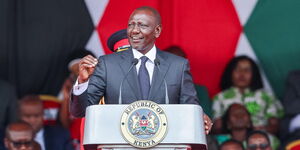Kenya alongside her East African neighbours including; Uganda, Rwanda, Burundi and Tanzania in 2014 established a Single Customs Territory (SCT) framework in relation to Customs Tax.
As explained by the Kenya Revenue Authority (KRA), the SCT is seen as a precursor to the full attainment of the Customs Union for EAC.
The Customs Union entails all EAC member States agreeing to remove trade barriers, reduce or abolish customs duty, and eliminate quotas.
“Single Customs Territory is the full attainment of the Customs Union achievable through minimization of internal border controls and removal of trade restrictions between Partner States ultimately resulting in the free circulation of goods in the Customs Territory,” KRA explains in its website.
How SCT Works
In the case of Kenya, goods originating from the country to the other EAC nations under the SCT framework are not subject to customs tariffs.
Custom tariffs are taxes paid on goods imported into a country. Before the introduction of SCT, this used to increase the cost of doing business for Kenyan entrepreneurs.
It should be noted that this exemption is only offered to Kenyan goods that meet the EAC Rules of Origin Criteria.
“Goods imported from outside the Customs Union, which have been entered and released for home consumption, are free to circulate within the Community,” KRA explains.
To enjoy the benefits of SCT, while exporting goods, they are entered while at the first point of entry.
Point of entry refers to seaports, airports or border posts within Kenyan territory where goods can leave the country.
A single customs declaration is made at that time to the destination country when the goods are still at the first point of entry.
Kenya and the destination country are able to monitor the goods through an electronic cargo tracking system by taking advantage of an interconnected customs system.
Benefits of SCT
Kenyan traders have been able to use SCT to reduce clearance time as well as reduce the cost of doing business.
Additionally, governments have been able to use the system to reduce risks associated with non-compliance during the transit of goods.
Before the introduction of the SCT, traders would use the lack of coordination between EAC member states to smuggle goods.
The cooperation between the five nations has further seen enhanced trade in locally produced goods as well as efficient revenue management.












